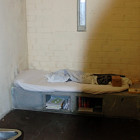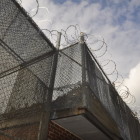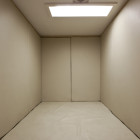
N.J. Solitary Confinement: Extreme Cases of Life ‘In the Box’
|
A recent lawsuit and its settlement have placed New Jersey's use of punitive solitary confinement of juveniles in the spotlight of a national debate over the practice.
Juvenile Justice Information Exchange (https://jjie.org/series/juvenile-solitary-confinement/page/7/)

A recent lawsuit and its settlement have placed New Jersey's use of punitive solitary confinement of juveniles in the spotlight of a national debate over the practice.

At 17, Michael Kemp spent six months in solitary confinement.

For James Burns solitary confinement began when he was six years old. As he writes in a recent ACLU article, “They restrained me, they yanked down my pants, and they gave me a shot. It knocked me out."

The American Civil Liberties Union has called for a ban on solitary confinement of children being held in juvenile facilities.

A closer look at the report on the mental health services provided in the Illinois DJJ reveals several areas in need of improvement.

Is Calif. lock-up deliberately and illegally depriving wards of education as part of a solitary-confinement regimen?

My son is 25 years old. He has spent the majority of the last 15 years in detention centers, youth prisons, county jails and state prisons.

Legislators in Texas heard a proposal Tuesday from Democratic state Sen. Leticia Van de Putte that would limit solitary confinement throughout the state’s juvenile detention facilities, the Associated Press reports.

The Federal Bureau of Prisons will hire an independent auditor to review the use of solitary confinement in federal prisons, according to a statement released by the bureau. The move could impact thousands of juveniles in adult facilities who are frequently isolated from adult inmates, sometimes on the pretext of protecting their personal safety.

Recently, the American Civil Liberties Union (ACLU) and Human Rights Watch published a new report titled “Growing Up Locked Down: Youth in Solitary Confinement in Jails and Prisons Across the United States.”
The publication involved interviews with more than 125 juveniles in 19 states, alongside detention officials in 10 states.